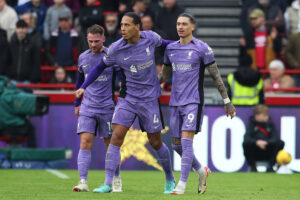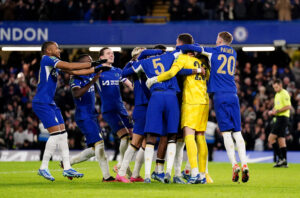Fans the world over have been calling for video assistant referee (VAR) to be employed for years. Finally they will get what they wished for—sort of. For the first time in EFL competition, VAR will be used in both legs of the Carabao Cup involving Arsenal and Chelsea.
And the timing couldn’t be better. It comes on the heels of a somewhat controversial league match last week between the two London sides mid-week. Further, the match before between Arsenal and West Brom resulted in a very questionable late penalty awarded by Mike Dean.
Finally, the technology we all crave is here, sort of
Chelsea host Arsenal at Stamford Bridge in the first leg of the semi-final next Wednesday, with Arsenal playing host a week later. Interestingly, the EFL announced that “VAR will NOT be in operation at either of the Manchester City v Bristol City Semi-Final legs.”
The use of VAR in the latter stages of the competition follows the EFL’s commitment to support English football’s contribution to the live trial currently taking place across world football – after being introduced in 2016 by the International Football Association Board (IFAB).
From the EFL:
The role of the VAR is to assist the referee in ONLY four match changing situations:
- Goals
- Penalty/no penalty decisions
- Direct red cards shown or not shown (second yellow cards are not able to be reviewed)
- Mistaken identity
The original decision of the referee on the pitch can only be changed if a video review shows a clear and obvious error.
Not wanting to go overboard and slow the game to a snail’s pace, the idea is to focus on clear and obvious errors. The idea is not to make every call 100% accurate, but as a way to make sure obvious game-changing decisions are missed.
More from the EFL:
The review process, which can be requested by the referee or recommended by the VAR, takes two forms.
Firstly, the VAR can inform the referee that there is a factual error on a clear situation which does not require the referee to review the video. For example, the player who scored a goal was an in an offside position. You will then see the referee making the ‘TV screen’ signal and he can then change the original decision, disallowing the goal and penalising the offside offence.
In situations that are less clear the VAR will advise the referee to look at the video. This is called an On-Field Review. You will see the referee move to the side of the pitch to review the footage on a monitor before making the final decision. Following a review, the referee will make a ‘TV screen’ signal and communicate the final decision. This may either confirm or change the original decision.
Usually, these reviews will take place during a stoppage in play and the referee will hold up the game until the review is completed. Occasionally, the referee may choose to stop the game to consider a review. This will only happen when play is in a ‘neutral’ area, typically in midfield.
IFAB will continue to monitor the system and the way it has impacted on the game in the many competitions who are participating in the experiment, before deciding whether to amend the Laws of the Game to include Video Assistant Referees.
Main image credit:
Embed from Getty Images






